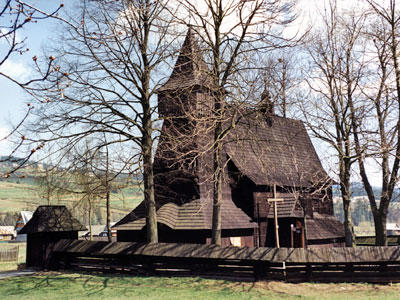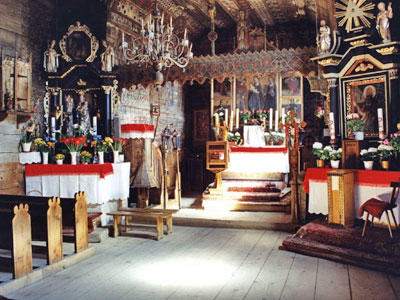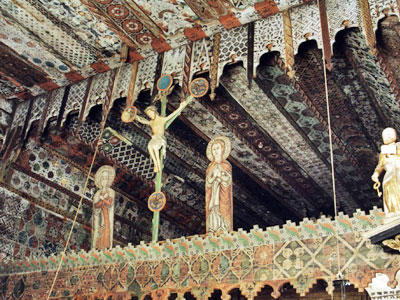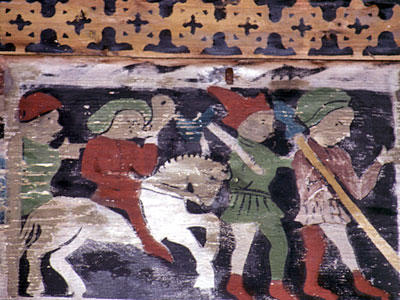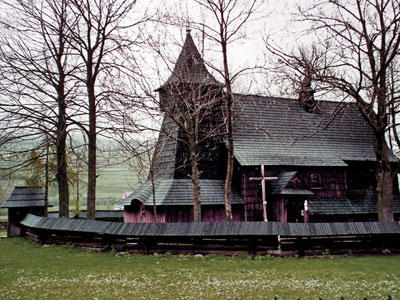Nestled among the foothills of the Pieniny and Gorce mountains, Debno Parish Church is an exceptional example of the wooden Gothic churches of southern Poland. Archival information on the early history of the first wooden church, built in the early fourteenth century, is scarce. The present building was constructed in the late fifteenth century, although it does retain some of the original furnishings, including a crucifix from 1380. (An older artifact, a thirteenth-century Romanesque panel painting, has since been moved to a museum in Kraków.) Inside the historic sanctuary, fifteenth-century stencil-patterned paintings decorate the walls and ceiling. The diverse and intricate composition, depicting anthropomorphic and zoomorphic figures, reflects influences from contemporary Polish court art. Over 77 different patterns have been recorded, ranging from simple motifs to highly complex designs. After Debno lost its parish status in 1630, the sanctuary became an affiliate church of a nearby village, and, by the eighteenth century, only held mass on every third Sunday. Despite its decline in recent centuries, the church has been in continuous use since its construction.
1996 and 1998 World Monuments Watch
In the 1990s, the construction of a reservoir and concrete barrier near the church caused the water table of the entire Nowy Targ valley to rise. Water ingress caused damage to the painted surfaces, which had remained relatively intact over the centuries largely due to the soundness of the wooden foundations. The rising water level also threatened the structural stability of the church. Although the local community has been dedicated to the preservation of the historic building, they lack the resources necessary for its protection. Debno Parish Church was included on the World Monuments Watch in 1996 and 1998. In 1999, WMF supported research and documentation on conditions of the structure, interior decorations to determine the causes of deterioration as well as develop conservation plans for eventual conservation of the exterior, as well as the important medieval wall paintings in the sanctuary.
The wooden churches of southern Poland represent a unique regional legacy of religious art and architecture. An inseparable element of the cultural landscape, these historic sanctuaries reflect the artistic and social aspirations of their local communities. In the 20th century, many of the medieval buildings were neglected, abandoned, or even demolished as a result of population shifts in these local parish communities, lack of resources, as well as loss through fire or new regional development needs. Debno Parish Church is one of the oldest and best-preserved medieval churches in the Podhale region. Distinguished by its remarkable painted program, the church is an exceptional example of local building traditions. WMF’s advocacy work and project at the site helped generate interest not only in the church, but also in the vernacular wooden churches found throughout the region. Debno Parish Church was inscribed on the UNESCO World Heritage List in 2003 as part of the “Wooden Churches of Southern Little Poland.”

